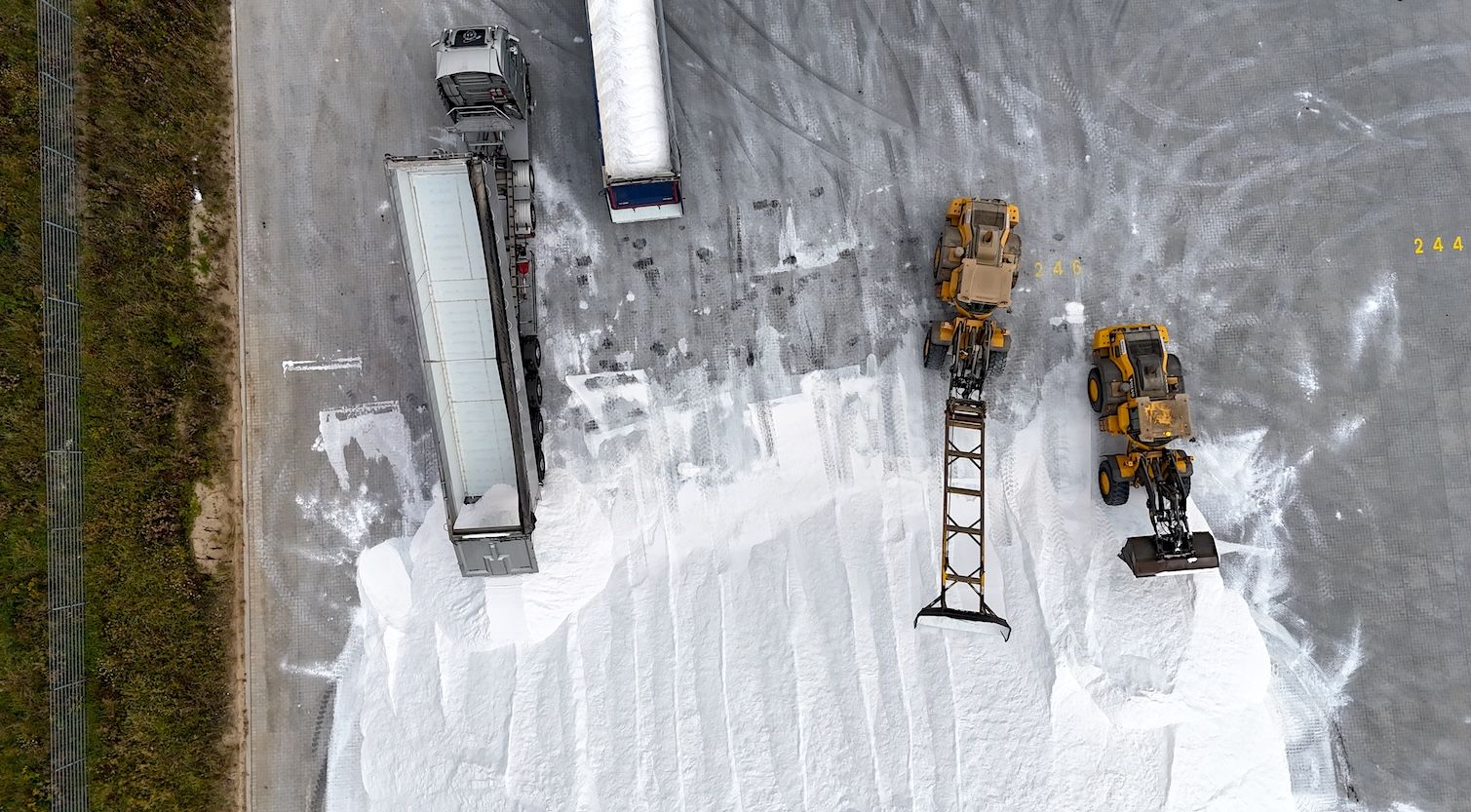What is particulate matter and road dust?
Particulate matter are particles less than 100 micrometers in diameter (a hair is about 60-80 micrometers).
Road dust is a type of airborne dust that comes from traffic. These can be microscopic pieces of tires, brake dust, asphalt, loose sand, and gravel. During winter, many of these particles remain on the ground due to snow, ice and moisture. In the spring, the roads dry up, and this is whirled up by cars in motion. The dust particles are easily taken by the wind and can be spread over areas far away from the road. In cities and densely populated areas with gravel roads, the dust can become a major problem.
Read about calcium chloride and order the product for dust binding of road here.
Why is particulate matter and road dust a problem?
Impact on airborne particles is one of the biggest health problems in Norway, and from January 1st 2022, the authorities have made the legislation for air quality stricter. This means that the municipalities have to take measures.
Particulate matter is dangerous because the particles are so small that they can enter the lungs and be absorbed into the bloodstream. This can have a negative effect and in the worst case cause damage to lungs, airways and blood pressure and several other critical diseases, according to National Institute of Public Health (FHI.)
Risk groups such as elderly, pregnant women and children are particularly vulnerable. People who already have respiratory diseases can get more severe ailments with increased exposure to airborne dust.

Concrete dust and masonry dust (brick dust?) are dangerous
In addition to the harm road dust can cause, dust from construction sites, tunnels and concrete surfaces can also be very harmful to the body. The dust found in partly concrete, mortar and brick are released and swirled during grinding, drilling and other similar activities.
Dust from untreated concrete surfaces can easily be released even without such work. To ensure good and safe working conditions, one should therefore use funds to bind dust, in addition to personal protective equipment.
How to reduce particulate matter from roads and concrete surfaces?
During spring, there is extra dust on the roads, and it is necessary to take measures to bind and remove the dust. Brushing and flushing of roads and construction sites are the traditional methods.
In addition, a hygroscopic agent such as Calcium Chloride should be used to bind residual dust particles. Read more about why calcium chloride is well suited for dust binding on roads, construction sites and concrete surfaces here.
Feel free to see our product range in snow melting, ice melting and dust binding for roads, or contact one of our salt experts on telephone 55 33 24 00








